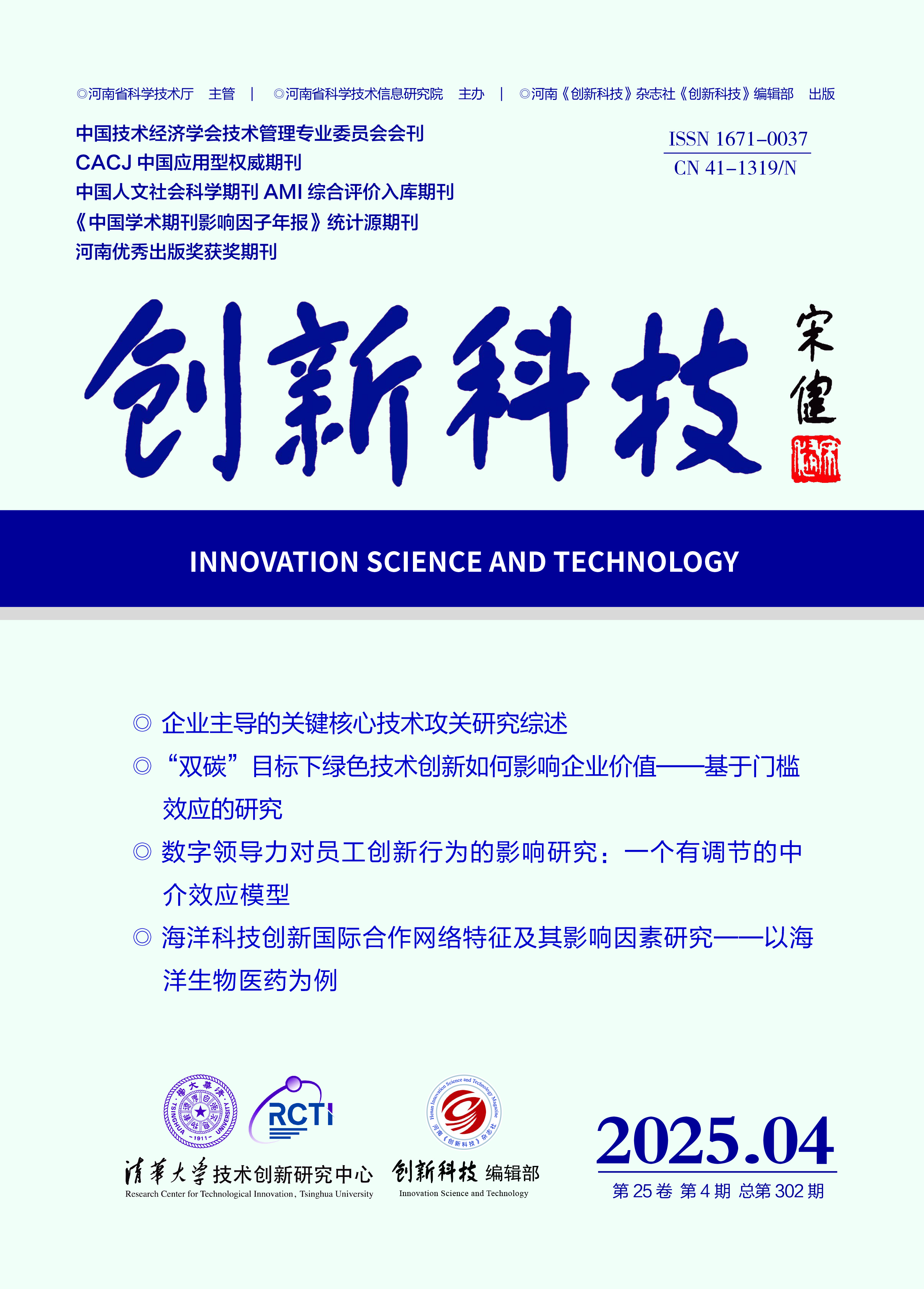INNOVATION SCIENCE AND TECHNOLOGY
Quick Search

All publication are peer-review
Peer review will take the from of double-blind review Judge objectively and impartially
There is no conflict of interest for the reviewer
Review articles shall be kept strictly confidential prior to publication
Theories and Methods of Science of Science
The Driving Mechanism of Digital Business Environment on the Development of Digital Economy from the Perspective of Configuration
—A Qualitative Comparative Analysis of Fuzzy Sets Based on the TOE Framework
Zhao Yubo1,2 , Zhang Xuqing1 , Liu Luyi1
(1.School of Business and Administration, Henan University of Economics and Law, Zhengzhou 450046, China; 2.Business School, Henan University, Kaifeng 475004, China)
Abstract: In the context of the popularity of information technology and the rapid advancement of a new round of scientific and technological revolution, the digital economy has been booming and developing rapidly, injecting a strong impetus into steering China's economy to⁃ ward high-quality development. Currently, China is at a critical juncture in the transition be⁃ tween old and new growth energies. By prioritizing the optimization of the digital business envi⁃ ronment, the country can promote digital technological innovation and business model innova⁃ tion. This approach will help create a more rational market competition order, thereby laying a solid foundation for the digital economy to ascend to a higher level of development. Drawing on the Technology-Organization-Environment (TOE) framework and the configuration theory, five characterizing dimensions of the digital business environment are identified, namely digital mar⁃ ket, digital finance, digital talent supply, digital infrastructure, and government regulation and service. These dimensions integrate the three levels of organization, environment, and technol⁃ ogy. By employing the Fuzzy-sets Qualitative Comparative Analysis (fsQCA) methodology, a con⁃ figurational analysis of the digital business environment driving the digital economy development is conducted across 31 provinces to explore the combined effects of the five antecedent and con⁃ sequent variables of the digital business environment. The aim is to uncover the "multiple con⁃ current" and "equifinal" paths that contribute to a high level of digital economy development. The research findings indicate that: ①No single factor—such as digital talent supply, digital fi⁃ nance, government regulation and service, digital market, or digital infrastructure—can solely create the necessary conditions for a high level of digital economy development; ②The develop⁃ ment of the digital economy is influenced by multiple factors within the digital business environ⁃ ment, which can be categorized into four typical driving paths: multidimensional synergy, government-led digital initiatives, the coupling of digital talent and finance, and digital market dominance; ③Under specific circumstances, a potential substitution relationship exists between digital talent supply and both digital finance and digital infrastructure respectively. Finally, based on different types of development trajectories, corresponding resource allocation combina⁃ tions are proposed to offer configurable elements of the digital business environment that can serve as models for the digital economy development in each province. For provinces with a ma⁃ ture digital market, two paths can be taken: a digital market dominance path, which aims to transform the government governance model, strengthen market regulation, and cultivate a data factor market; a multidimensional synergy-driven path, which focuses on clarifying the property attributes of data, improving the transaction system, strengthening the protection of personal in⁃ formation, and optimizing resources allocation. Provinces with an immature digital market have two alternatives as well: a digital government-led path, which reinforces the government's guid⁃ ing role; a coupling of digital talent and finance path, which establishes incentive mechanisms, promotes talent attraction and retention, and accelerates digitalization reform. Provinces should systematically assess their resources, select development paths commensurate with their re⁃ source endowments, formulate targeted policies, achieve policy synergy, aggregate resources, and promote the high-quality development of the digital economy.
Key words: fsQCA; TOE framework; digital business environment; digital economy; driving mechanism